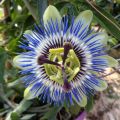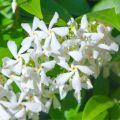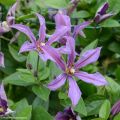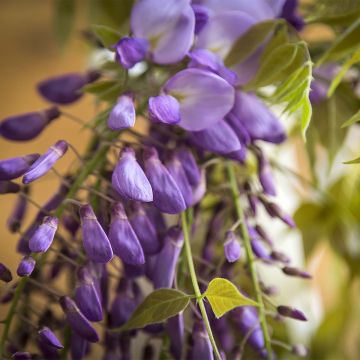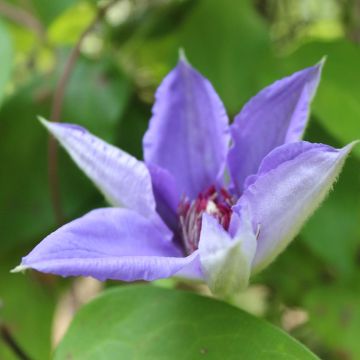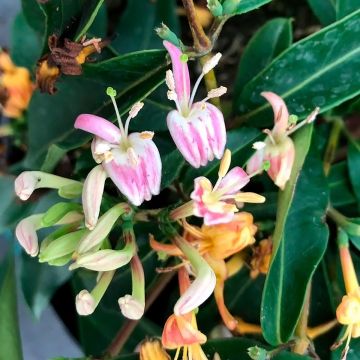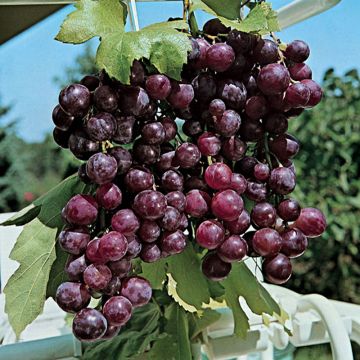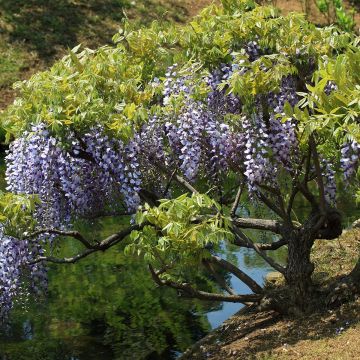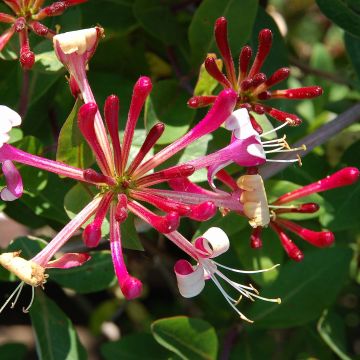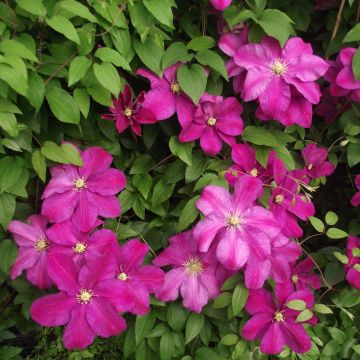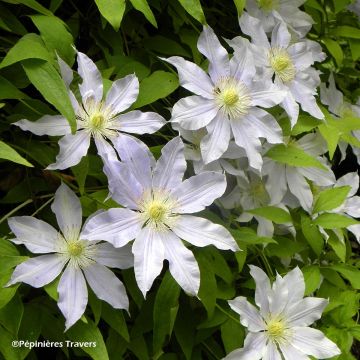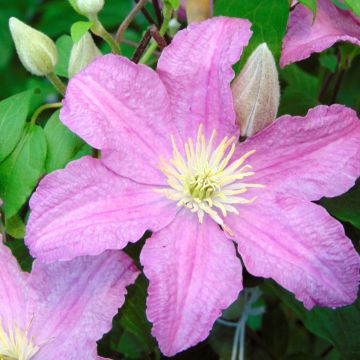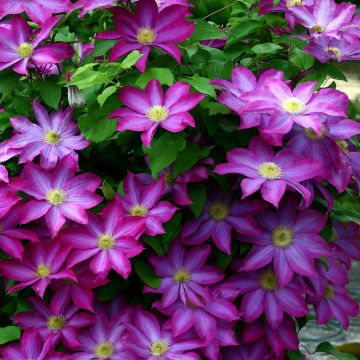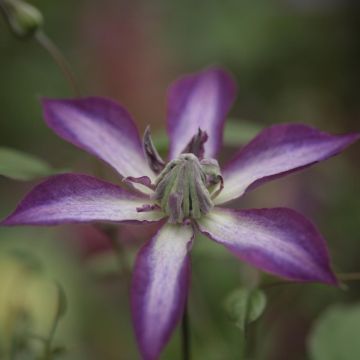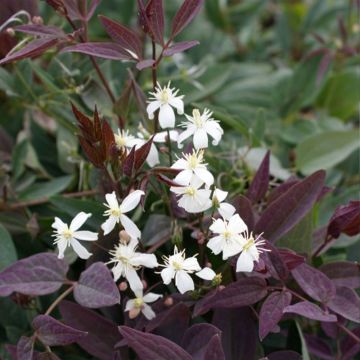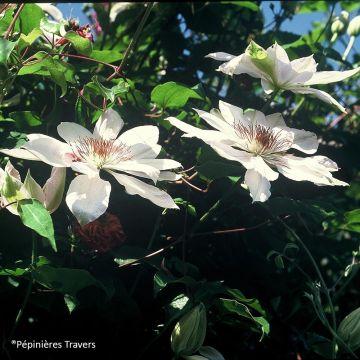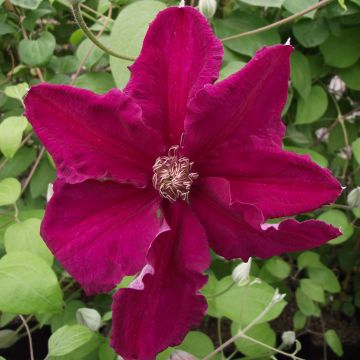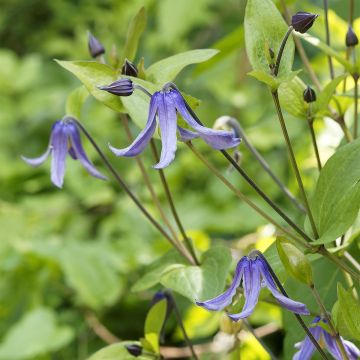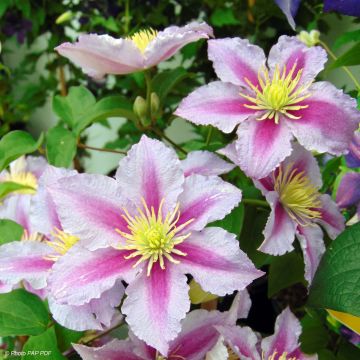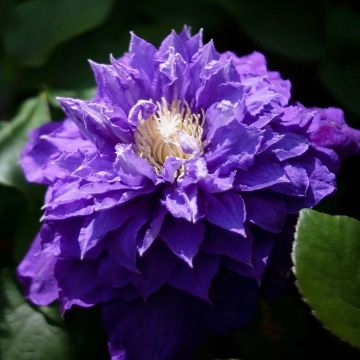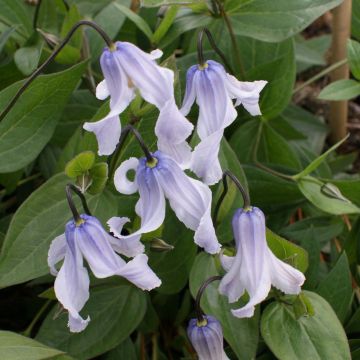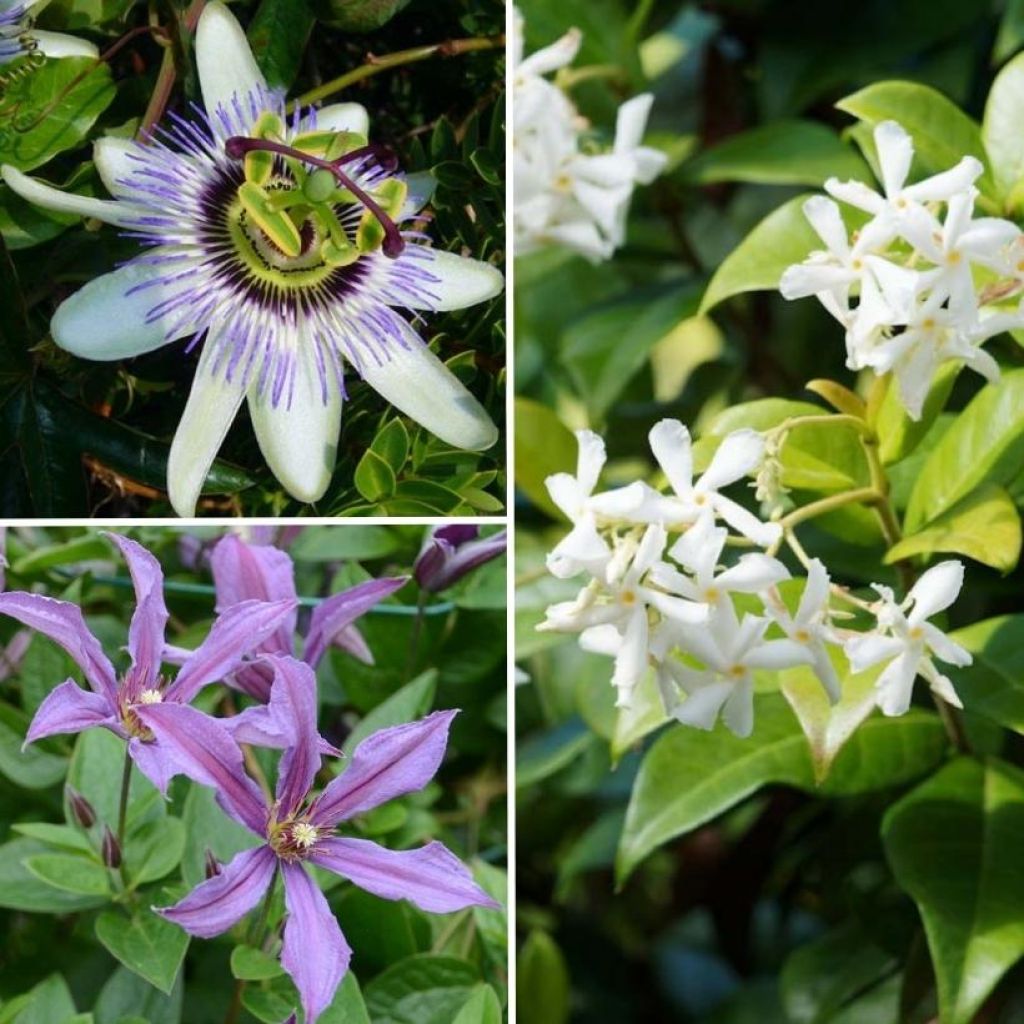

The Best Climbing Plants Collection
The Best Climbing Plants Collection
Passiflora, Trachelospermum, Clematis
Parcel arrived open on one of the midribs: cardboard too soft for this rainy autumn weather and products poorly secured inside, therefore plants were jostled and slightly broken. Inexpensive but really young plants: while waiting to plant them, placed in a large pot for them to recover from the transportation.
Isa, 11/12/2023
This plant carries a 6 months recovery warranty
More information
We guarantee the quality of our plants for a full growing cycle, and will replace at our expense any plant that fails to recover under normal climatic and planting conditions.
From €5.90 for pickup delivery and €6.90 for home delivery
Express home delivery from €8.90.

Does this plant fit my garden?
Set up your Plantfit profile →
Collection items (3 plants)
Description
This collection of 3 essential climbing plants brings together varieties known for their ease of cultivation and ornamental qualities. Offered in 8 or 9 cm (3 or 4in) pots, these young plants allow gardeners to indulge, for a reasonable budget. We have chosen here the blue passionflower, vigorous and hardy, the evergreen false jasmine with its highly scented white flowers, and the beautiful shrubby clematis Saphyra Estrella which produces an abundance of violet star-shaped flowers, from spring to summer.
This collection includes:
1 x Passiflora caerulea: a vigorous, perennial climber, hardy down to -10 °C (14°F), more or less evergreen in winter, twining around its support thanks to tendrils. Its fragrant flowers, 7-8 cm (3in) in size, are blue-white with a double collar of tricoloured filaments. They can produce edible but bland orange fruits. The blue passionflower can reach a height of 9 m (29ft) in mild climates, but will not exceed 5 or 6 m (16 or 20ft) in cooler climates. This highly decorative vine grows well in ordinary, well-drained soil, even with summer drought.
1 x Trachelospermum jasminoides: better known as False Jasmine or Star Jasmine, this evergreen climbing plant blooms in June-July, and its small white star-shaped flowers can perfume an entire area of the garden. It can reach 8 m (26ft) in all directions. Hardy even in colder areas, as long as it is planted in a sheltered position, it will withstand summer drought once well established.
1 x Clematis Saphyra Estrella: an excellent variety obtained by the INRA (French National Institute of Agricultural Research), this clematis has a shrubby rather than climbing habit and does not exceed 1 m (3ft) in all directions. It flowers from June to September, with 7-8 cm (3in) wide, blue-violet and star-shaped flowers. Its foliage is deciduous. Fully hardy, it is also resistant to diseases. Plant it in the garden or in a container in rich, moist, well-drained soil.
The blue passionflower is perfect to cover fences, trellises, unsightly wire netting, or old sunny walls, in Mediterranean or oceanic climates where it can grow profusely. Plant it in a sheltered position, away from strong winds. It is an excellent companion for other climbing plants. It is also possible to plant annuals and perennials at its base, or to let it climb into shrubs.
The star jasmine can tolerate brief frosts of around -10 °C (14°F) to -15 °C (5°F) when planted in a sunny spot, in well-drained soil. In mild climates, its cultivation poses no problems. While it is often used to climb walls or fences, it can make an excellent ground cover, even under deciduous trees, as an alternative to ivy. Perfect to bring density to a hedge, alongside evergreen shrubs or to hide unsightly views, Trachelospermum jasminoides can form a beautiful permanent "tunnel", a passage between two areas of the garden; it is easy to train on a structure made with two arches connected by wires. It can also adorn the edge of a staircase or add interest to the slopes of a sunken path...
The 'Saphyra Estrella' clematis, thanks to its very modest size, can be planted in the garden or in a container on the balcony. It can look beautiful placed close to an entrance or above a low wall, where it will flower throughout the summer. It can also be allowed to run freely as a ground cover in a shrub bed of garden or carpet roses.
Our advice: young plants in small pots will benefit from being repotted into 20-25 cm (8-10in) diameter pots and receive attentive care for a few months. This will allow their root system to develop, for better performance later in the open ground.
Report an error about the product description
Plant habit
Flowering
Foliage
Botanical data
Passiflora, Trachelospermum, Clematis
Cultivar or hybrid
Other Climbers A to Z
Planting and care
Passiflora caerulea can withstand frosts up to about -12 °C (10.4°F) once it is mature and well established. Even in colder areas, it can therefore be planted in the open ground, in a sheltered spot such as along a south-facing wall. Don't forget to mulch it well before the first frosts. In case of severe frosts, cut it back to the ground in early spring. You can do a hard prune as flowers appear on new growth. It won't mind: the blue passionflower is a fast grower, up to 4 m (13ft) per year. Although it dislikes extreme cold, it is hardy and easily adapts to sunny conditions. It prefers a poor, well-drained, deep, and loose soil, and tolerates limestone well. In mild climates, this passionflower is extremely vigorous and can become almost invasive, especially through spontaneous seedlings. Its tolerance to summer drought is excellent, even in very dry areas.
Plant Trachelospermum jasminoides in spring in colder areas, or in September-October in the south. Choose a sunny or semi-shaded exposure (it even tolerates full shade, although it will be slightly less floriferous), deep, loose, and well-drained soil, and a spot sheltered from cold winds. It can tolerate frosts up to -10 °C (14°F), even occasionally -15 °C (5°F) but will better withstand extreme frosts if the foliage is protected with winter fleece and the soil is rather dry. This plant tolerates limestone, provided there is no excess moisture in winter; in heavy waterlogged soil, it may show symptoms of chlorosis (leaves gradually turning yellow from the periphery, with the veins remaining green). Water in summer, or in case of drought during the first two years to help the plant get established. Once the roots have grown deep enough into the soil, it will manage on its own, even in very dry summers. During the growth period, water once or twice a week and optionally apply liquid fertiliser twice a month. In autumn, slow-release organic fertiliser can be applied and lightly buried by scratching the soil around the base of the plant, starting from the second year. Prune in late winter to manage its habit, or after each flowering period.
Clematis 'Saphyra Estrella' is best planted in full sun, in fertile, humus-rich, well-drained soil, ensuring the roots and base of the stem are shaded (with a flat tile for example). Herbaceous Clematis species prefer full sun and wilt in excessively wet soil. Plant your Clematis by covering the root ball with 3 cm (1in) of soil, in soil worked to a depth of 20 cm (8in), lightened with good quality compost. During the first few weeks, water regularly, but be careful of stagnant water, as it can cause collar rot. Cover the base of your climbing clematis with a small mound of soil to reduce the risk of wilting, while encouraging vigorous shoots to emerge from the base. After planting, prune the stems of deciduous climbing clematis to about 30 cm (12in) from the base, above a nice pair of buds. Mulch in February with garden compost or well-rotted manure, avoiding direct contact with the stems. Train the stems, without tightening them, until the plant clings by itself. Clematis also like to grow freely on neighbouring plants. This variety flowers on new growth, so you can prune it quite severely in late winter. The young shoots attract slugs. Voles and grey worms can attack clematis and devour the stems. Aphids and greenhouse whiteflies are also potential pests.
Planting period
Intended location
Care
-
, onOrder confirmed
Reply from on Promesse de fleurs
Clematis
Haven't found what you were looking for?
Hardiness is the lowest winter temperature a plant can endure without suffering serious damage or even dying. However, hardiness is affected by location (a sheltered area, such as a patio), protection (winter cover) and soil type (hardiness is improved by well-drained soil).

Photo Sharing Terms & Conditions
In order to encourage gardeners to interact and share their experiences, Promesse de fleurs offers various media enabling content to be uploaded onto its Site - in particular via the ‘Photo sharing’ module.
The User agrees to refrain from:
- Posting any content that is illegal, prejudicial, insulting, racist, inciteful to hatred, revisionist, contrary to public decency, that infringes on privacy or on the privacy rights of third parties, in particular the publicity rights of persons and goods, intellectual property rights, or the right to privacy.
- Submitting content on behalf of a third party;
- Impersonate the identity of a third party and/or publish any personal information about a third party;
In general, the User undertakes to refrain from any unethical behaviour.
All Content (in particular text, comments, files, images, photos, videos, creative works, etc.), which may be subject to property or intellectual property rights, image or other private rights, shall remain the property of the User, subject to the limited rights granted by the terms of the licence granted by Promesse de fleurs as stated below. Users are at liberty to publish or not to publish such Content on the Site, notably via the ‘Photo Sharing’ facility, and accept that this Content shall be made public and freely accessible, notably on the Internet.
Users further acknowledge, undertake to have ,and guarantee that they hold all necessary rights and permissions to publish such material on the Site, in particular with regard to the legislation in force pertaining to any privacy, property, intellectual property, image, or contractual rights, or rights of any other nature. By publishing such Content on the Site, Users acknowledge accepting full liability as publishers of the Content within the meaning of the law, and grant Promesse de fleurs, free of charge, an inclusive, worldwide licence for the said Content for the entire duration of its publication, including all reproduction, representation, up/downloading, displaying, performing, transmission, and storage rights.
Users also grant permission for their name to be linked to the Content and accept that this link may not always be made available.
By engaging in posting material, Users consent to their Content becoming automatically accessible on the Internet, in particular on other sites and/or blogs and/or web pages of the Promesse de fleurs site, including in particular social pages and the Promesse de fleurs catalogue.
Users may secure the removal of entrusted content free of charge by issuing a simple request via our contact form.
The flowering period indicated on our website applies to countries and regions located in USDA zone 8 (France, the United Kingdom, Ireland, the Netherlands, etc.)
It will vary according to where you live:
- In zones 9 to 10 (Italy, Spain, Greece, etc.), flowering will occur about 2 to 4 weeks earlier.
- In zones 6 to 7 (Germany, Poland, Slovenia, and lower mountainous regions), flowering will be delayed by 2 to 3 weeks.
- In zone 5 (Central Europe, Scandinavia), blooming will be delayed by 3 to 5 weeks.
In temperate climates, pruning of spring-flowering shrubs (forsythia, spireas, etc.) should be done just after flowering.
Pruning of summer-flowering shrubs (Indian Lilac, Perovskia, etc.) can be done in winter or spring.
In cold regions as well as with frost-sensitive plants, avoid pruning too early when severe frosts may still occur.
The planting period indicated on our website applies to countries and regions located in USDA zone 8 (France, United Kingdom, Ireland, Netherlands).
It will vary according to where you live:
- In Mediterranean zones (Marseille, Madrid, Milan, etc.), autumn and winter are the best planting periods.
- In continental zones (Strasbourg, Munich, Vienna, etc.), delay planting by 2 to 3 weeks in spring and bring it forward by 2 to 4 weeks in autumn.
- In mountainous regions (the Alps, Pyrenees, Carpathians, etc.), it is best to plant in late spring (May-June) or late summer (August-September).
The harvesting period indicated on our website applies to countries and regions in USDA zone 8 (France, England, Ireland, the Netherlands).
In colder areas (Scandinavia, Poland, Austria...) fruit and vegetable harvests are likely to be delayed by 3-4 weeks.
In warmer areas (Italy, Spain, Greece, etc.), harvesting will probably take place earlier, depending on weather conditions.
The sowing periods indicated on our website apply to countries and regions within USDA Zone 8 (France, UK, Ireland, Netherlands).
In colder areas (Scandinavia, Poland, Austria...), delay any outdoor sowing by 3-4 weeks, or sow under glass.
In warmer climes (Italy, Spain, Greece, etc.), bring outdoor sowing forward by a few weeks.

































